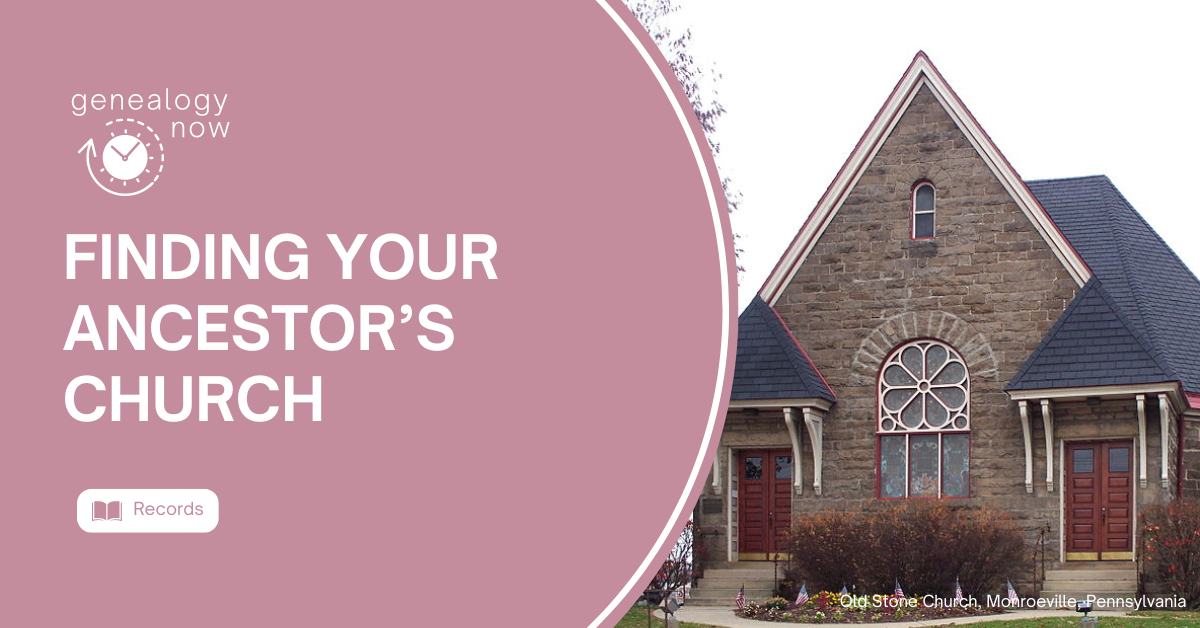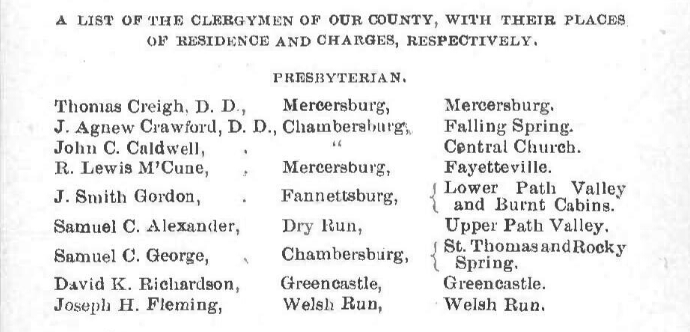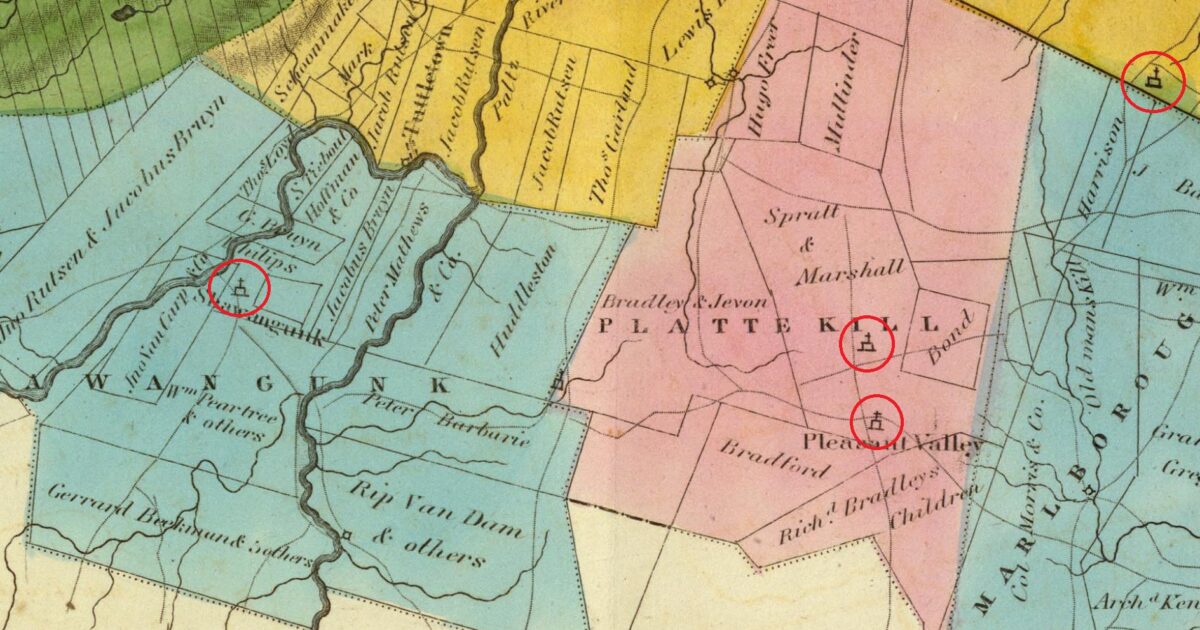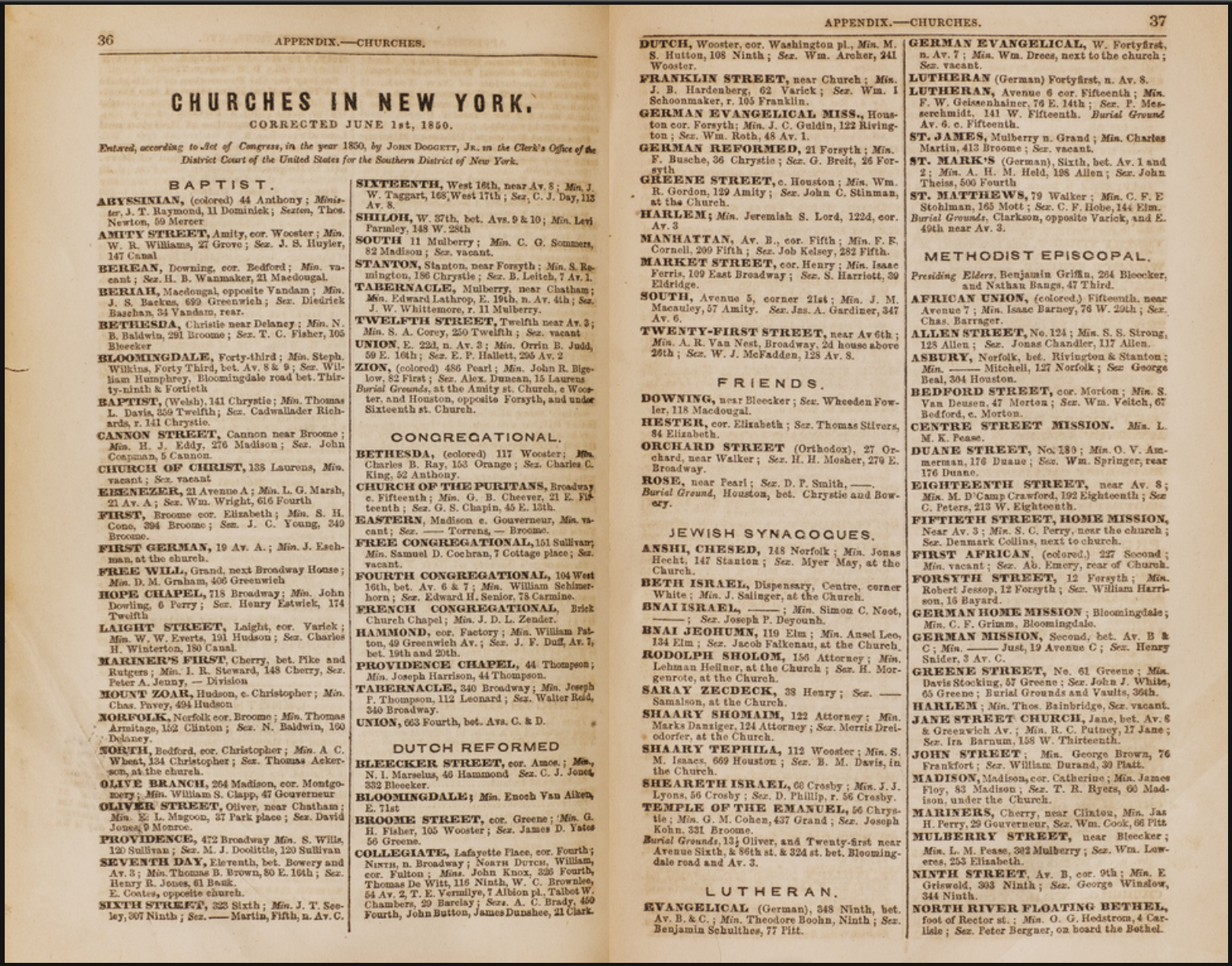
Church records can be a key record type when researching your U.S. ancestor before civil registration of vital events was required. Church records were generally kept in a register by the local clergyman and might include baptism, marriage, and burial records, and others.
To find these records, genealogists need to discover what churches were in current use in the place and time their ancestors lived. Think about how far your ancestor might have feasibly traveled to attend church and broaden your search to include neighboring towns that would fit within that radius. Then search in some of the following places to learn more about the churches your ancestor might have attended.
County Histories
County histories were popular in the late 1800s, and they often include information about churches in operation in the county. Below, you can see an example from a Franklin County, Pennsylvania, history, which listed clergymen in the area by denomination and charge. Other histories have entire chapters or sections on the establishment of early churches in the area.

Search for county histories in the FamilySearch catalog, Internet Archive, Google Books, and HathiTrust.
The Social Statistics Schedule
If your ancestor lived between 1850-1870, the social statistics schedule might be helpful. It was created during each federal census enumeration and provides data about religious denominations and the number of churches of each denomination in a given locality.

Ancestry has digitized images of the social Statistics schedule for twenty-one U.S. states in the collection, U.S., Selected Federal Census Non-Population Schedules, 1850-1880.
Early Land Ownership Maps
Early land ownership maps, also called “cadastral maps” often include the location of mills, factories, and churches. While the maps don’t specify denominations, these can help you know how many churches you need to identify in the area.

There are many places to access early land ownership maps. A few places to start are the David Rumsey Map Collection, the Library of Congress, and Old Maps Online.
City Directories
If your ancestors lived in an urban area, city directories can be helpful, as they often include a list of churches. Find a directory close to the time of interest and look for the list of churches. This New York City directory includes five pages of church listings by denomination. Each listing provides the church address and the name of the current clergyman.

Digitized city directories are widely available. Find them at FamilySearch, Ancestry, the Library of Congress, Internet Archive, HathiTrust, and Google Books just to name a few.
Next Steps
After identifying churches that were extant during your ancestor’s lifetime, you can then track down the church records. If you know your ancestor’s denomination, that can narrow the number of church records that will need to be searched. Learn more about finding your ancestor’s denomination in my article, U.S. Church Records: A Valuable Substitute for Vital Records. For more extensive information about finding your ancestor in U.S. Church records, see Sunny Morton and Harold Henderson’s book, How to Find Your Family History in U.S. Church Records: A Genealogist’s Guide.
What other resources have you used to locate churches that were extant in your ancestor’s time and place?

Great post! This is important to know how to do.